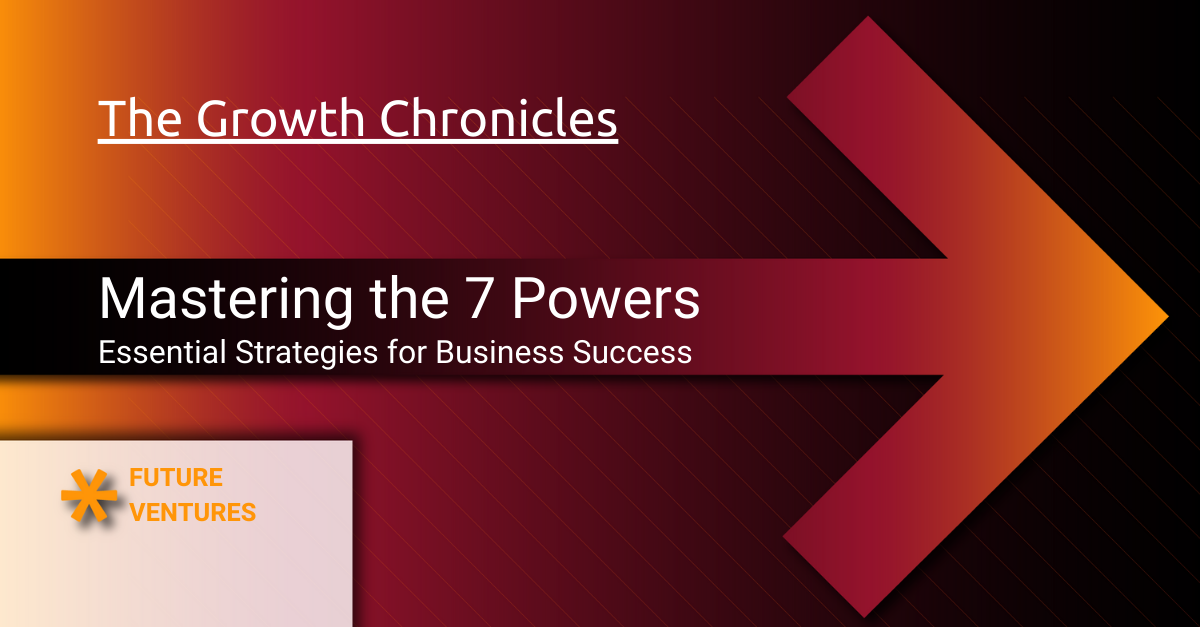Scale Up vs. Start Up The Complete Founder's Guide to Business Evolution
Why most entrepreneurs confuse the game they're playing and how understanding the difference between startups and scaleups determines whether you build a unicorn or become another casualty statistic.
The Brutal Truth About Scale Up vs Start-Up
Here’s what Silicon Valley won’t tell you: calling your three-year-old company a “startup” is like a 35-year-old calling themselves a “young professional.” You’re not fooling anyone, and you’re missing the point entirely.
The difference between startups and scaleups isn’t semantic; it’s strategic. It determines your hiring decisions, your funding approach, your operational focus, and ultimately, whether you survive the Valley of Death, which kills 90% of new ventures.
What is a start-up? What is a scale-up?
- Start-up: Applies to young, innovative companies that leverage new technologies and focus on rapid growth with unique business models.
- Scale-up: Applies to companies that have progressed beyond the startup phase, achieving sustained rapid growth, a proven product-market fit, and a scalable business model, typically growing at an annual rate of 20% or more over three consecutive years.
The primary difference lies in their trajectory and understanding of product/market fit. There are key differences between startups and scaleups:
| Aspect | Startup | Scaleup |
|---|---|---|
| Focus | Experimental, finding product-market fit | Sustained rapid growth, market dominance |
| Team Size | Smaller teams, employees wear multiple hats | Larger teams, specialized roles |
| Business Model | Hypothesis-driven, evolving | Proven, scalable business model |
| Revenue Focus | Validation over optimization | Predictable, repeatable growth |
| Key Metrics | Customer discovery, prototype iterations | Customer acquisition cost, lifetime value, MRR |
| Investment | Time and sweat equity, seed funding | Capital efficiency, operational excellence |
| Market Validation | Crucial to determine demand | Already validated, focused on market domination |
| Risk Profile | High risk, agile and able to pivot quickly | Lower risk, focused on operational stability |
| Organizational Structure | Flat, informal workplace guidelines | Functional teams, clear accountability |
| Process and Systems | Flexible, evolving | Documented, scalable, and replicable |
| Customer Base | Small, exploratory | Established, predictable |
| Growth Rate | Variable, often unproven | Sustained growth of 20%+ annually over 3 years |
| Funding Sources | Bootstrap, angel investors, crowdfunding | Venture capital, significant capital investment |
| Challenges | Finding product-market fit, market readiness | Managing complexity, scaling operations |
| Goal | Find a viable business model | Optimize and scale a proven model |
| Examples | Early Airbnb, pre-product-market fit startups | Airbnb post-market fit, Stripe post-2013 |
👉 The Reality Check: If you’ve been in business for more than two years and haven’t figured out your core value proposition, you’re not a startup anymore. You’re a small business with delusions of grandeur.
The Numbers Game
Scaleups create jobs at a much higher rate than other business types, generating 70% of new jobs despite representing only 3-5% of all businesses.
Meanwhile, startups burn through $11.4 trillion globally each year, with most never making it past the product-market fit phase. Many scaleups achieve an annual growth rate of 20% or more for three consecutive years, reflecting their successful market penetration. Turnover growth is also a key metric for scaleup classification, as companies must demonstrate a significant increase in turnover over multiple years to be recognized as scaleups. A scaleup is characterized by a proven business model, achieving over 20% annual growth for three consecutive years, and having at least 10 employees to prove its viability. Scaleups are often defined by a significant increase in the number of employees as they expand.
👉 The math is unforgiving: understand which stage you’re in, or become another statistic.
Decoding the Business Model Evolution
Your business model is your North Star. However, it changes as you evolve from a startup to a scaleup. A scalable business model is essential for a successful transition from startup to scaleup, enabling rapid growth and attracting investors. Here’s the transformation most founders miss: in a startup, employees cover a range of roles and skills, wearing multiple hats at once.
Startup Business Model: The Hypothesis Phase
- Primary Goal: Prove your assumptions wrong (yes, wrong). In the early phase, a budding entrepreneur must navigate uncertainties and challenge their own beliefs to find what truly works.
- Revenue Focus: Validation over optimization.
- Metrics That Matter: Customer discovery interviews, prototype iterations, problem-solution fit.
- Investment: Time and sweat equity over capital efficiency. Startups often experiment with features, customer segmentation, and acquisition costs in the quest for product-market fit. Identifying problems and addressing them in a timely manner is easier for startups when the customer base is still small. Startups must also be prepared to pivot quickly in response to customer feedback or changing market conditions.
👉 Think of Airbnb’s early days: Brian Chesky and Joe Gebbia weren’t optimizing booking conversion rates. They were literally knocking on doors, staying in strangers’ homes, and figuring out if people would actually pay to sleep on an air mattress. Building a strong brand identity was essential to their success, as it helped establish trust and recognition in a nascent market.
Scaleup Business Model: The Execution Machine
- Primary Goal: Optimize what’s already working
- Revenue Focus: Predictable, repeatable growth
- Metrics That Matter: Customer Acquisition Cost (CAC), Lifetime Value (LTV), Monthly Recurring Revenue (MRR), Month-over-Month (MOM) Growth, etc.
- Investment: Capital efficiency and operational excellence
Scaleups tend to have a more structured team with specialized roles compared to startups. In scaleups, employees have dedicated, specialist roles due to a higher headcount. Having the right team is critical for scale-up success, as it ensures stability, growth, and the ability to disrupt the market. Once a startup evolves into a scaleup, roles and responsibilities within the team start to become more clearly defined.
Once Airbnb proved demand existed, they shifted to optimizing search algorithms, streamlining host onboarding, and building trust systems at scale. At this stage, scaleups can efficiently scale their operations, maximizing ROI through operational growth and increased efficiency.
Scaleups are focusing on market domination and operational excellence, leveraging their established product-market fit to accelerate growth.
The Transition Framework
| Business Model Element | Startup Phase | Scaleup Phase |
|---|---|---|
| Revenue Streams | Experimental | Optimized |
| Cost Structure | Variable, hypothesis-driven | Fixed, efficiency-focused |
| Key Partnerships | Validation-focused | Scale-enabling |
| Value Proposition | Evolving | Refined and proven |
| Customer Segments | Broad exploration | Laser-focused targeting |
Understanding the different stages of business evolution is crucial for startups aiming to become scaleups. Reaching the next stage is crucial for growth, as it typically involves stabilizing the business model, achieving key milestones, and scaling operations.
By identifying and progressing through these stages, startups can better prepare for the next phase in the business lifecycle.
The Tech Startup Landscape: Where Dreams Meet Data
The tech startup ecosystem is both the most opportunity-rich and most unforgiving environment for new ventures. Startups are transforming various industries and sectors, driving innovation and economic growth across diverse fields. They create new opportunities in emerging markets, fueling job creation and opening doors for success in rapidly evolving areas. Here’s why geography, timing, and sector choice matter more than your Harvard MBA:
The Silicon Valley Myth vs Reality
The Myth: You need to be in Silicon Valley to succeed. The Reality: 73% of unicorns are founded outside traditional tech hubs.
Austin, Miami, Denver, and even international markets like Bangalore and Tel Aviv are producing billion-dollar companies faster than Sand Hill Road can write checks. The scaleup format is increasingly popular around the world, particularly in the US, Israel, China, and the UK. As part of their growth strategy, scaleups often expand into new markets, establishing themselves in previously untapped regions to drive rapid growth and industry disruption.
Tech Startup Success Patterns
The data reveals three consistent patterns among successful tech startups:
- The 10x Rule: Successful tech startups don’t just solve problems. They solve them 10x better than existing solutions.
- The Platform Play: The biggest winners create platforms, not just products (think Shopify, not another e-commerce store).
- The Network Effect: Value increases exponentially with each new user (social media, marketplaces, communication tools).
- Innovation: Leading startups drive success by embracing innovation, developing new technologies and strategies that set them apart as industry pioneers.
Case Study: The Stripe Evolution
Stripe perfectly exemplifies startup-to-scaleup evolution:
Startup Phase (2010-2012):
- Problem: Online payments were complicated.
- Solution: Seven lines of code for payment processing.
- Focus: Developer adoption and product-market fit.
Scaleup Phase (2013-Present):
- Expanded to 42 countries
- Built adjacent products (Radar, Atlas, Capital)
- Systematic approach to market expansion
After 2013, Stripe entered its scale-up phase, leveraging increased capital to expand operations, infrastructure, and market reach as it moved beyond initial startup funding.
👉 The lesson? Stripe didn’t try to be everything to everyone initially. They mastered one thing perfectly and then scaled it systematically.
Tech Company vs. Startup: The Distinction That Matters
Every startup dreams of becoming a tech company, but not every tech company was a startup. Understanding this distinction shapes your strategic approach.
The characteristics that distinguish tech companies from startups include their stage of development, business models and focus on innovation and scalability. While all tech companies are innovative by nature, startups are typically defined by their rapid growth potential and early-stage business models.
For example, some tech companies were established as startups but have evolved over time into large, established organizations with different goals and structures.
What Makes a Tech Company
A tech company uses technology as its primary value driver and competitive advantage. As they grow, tech companies must maintain their innovative edge to stay ahead in the industry. But here’s the twist: being a tech company has nothing to do with your industry.
- Nike is a tech company (advanced materials, biomechanics, data analytics)
- Goldman Sachs is a tech company (algorithmic trading, risk modelling, financial technology)
- John Deere is a tech company (precision agriculture, IoT sensors, autonomous machinery)
Meanwhile, many “tech startups” are actually service businesses with websites.
The Tech DNA Test
Ask yourself three questions:
- Does technology create our competitive moat? (Not just enable basic functions)
- Do our marginal costs approach zero as we scale? (Software scales; services don't)
- Is our core value proposition impossible without technology? (Remove the tech - does the business still work?)
If you answered "no" to any question, you're building a business enabled by technology, not a tech company. This isn't a value judgment. It's a strategic reality that affects funding, scaling, and exit opportunities.
The Scale Up Imperative: When Growth Becomes Your Only Job
The transition from startup to scaleup is violent, sudden, and unforgiving. Scale-ups are defined by their ability to achieve sustained growth, moving beyond the initial challenges faced by startups. Most founders aren’t prepared for it because they’re still playing the startup game when the rules have changed.
During this transition, it is crucial to implement strategies that increase revenue to ensure sustainable growth and prevent rising operating expenses.
The Scaleup Inflection Point
You know you’ve hit scaleup territory when:
- Revenue growth exceeds 20% annually for three consecutive years.
- Product-market fit is proven with repeatable sales processes.
- Customer acquisition is predictable with known unit economics.
- Market demand exceeds your ability to serve it.
- Access to funds is critical as significant venture capital investments are often required to support rapid growth and expansion at this stage.
The Three Scaleup Pillars
1. Operational Excellence You can’t fake your way through operations anymore. Every process, system, and workflow must be designed for scale. As companies transition from startup to scaleup, they encounter new challenges that require adapting to increased complexity and evolving demands.
Example: Zoom’s infrastructure handled a 30x increase in daily users during COVID-19 because it was built for scalability from Day One.
2. Capital Efficiency Growth at any cost becomes growth at optimal cost. Every dollar must generate measurable returns. Scaleups demonstrate a lower risk to investors due to their validated business models compared to the higher risk faced by startups.
Framework: The Rule of 40: Your growth rate plus profit margin should exceed 40%. Above 40% indicates healthy scaling.
3. Leadership Evolution Startup founders must become scaleup CEOs. Different skills, different mindset, different daily activities.
Product Market Fit (PMF): The Bridge Between Startup and Scaleup
Product-market fit isn’t a destination; it’s a bridge. Startups and scaleups often have similar beginnings, originating from comparable ideas or conditions before diverging into different growth paths. Most founders think finding product-market fit means they’ve “made it.” In reality, it means you’ve earned the right to scale. Customer loyalty helps indicate that a startup is ready to scale up.
The PMF Recognition Framework
Marc Andreessen's famous "you'll know it when you feel it" isn't actionable enough. Use these concrete indicators:
Quantitative Signals:
- Retention Curves Flatten: New users stick around at predictable rates
- Organic Growth Accelerates: Word-of-mouth drives 30%+ of new customers
- Sales Velocity Increases: Time from lead to close decreases consistently
Qualitative Signals:
- Customer Pull: Customers start requesting features you're already building
- Competitive Differentiation: Customers choose you for specific reasons
- Usage Intensity: Customers integrate your product into core workflows
The PMF-to-Scale Playbook
- Document Everything: What got you to PMF must be systematized.
- Stress Test Assumptions: Can your PMF survive 10x more customers?
- Identify Constraints: What breaks first as you scale?
- Build Before You Need: Infrastructure, team, processes, etc. - all must precede demand. Built for scaleability.
👉 Scalability vs. Scale: Scalability is the capability of a business or system to handle increased demand by efficiently growing its capacity, while scale refers to the actual process or result of expanding operations and size to meet that demand.
Case Study: Slack's PMF Moment
Slack knew they had product-market fit when:
- Teams started using it for non-work conversations
- Daily active users grew faster than total users (increasing engagement)
- Customer acquisition cost decreased as word-of-mouth accelerated
Their scale-up strategy focused on enterprise features while maintaining the core experience that created PMF.
The Scaleup Company Blueprint: From Chaos to Systems
Becoming a scale-up company requires intentional transformation across five dimensions. The goals, challenges, and needs of scale-ups differ significantly from those of startups. Scale-ups often drive industry disruption through innovation, leveraging new technologies and non-traditional business models to reshape their markets.
1. Organizational Architecture
Startup Structure: Flat, everyone-does-everything, rapid decision-making. A flat organizational structure and informal workplace guidelines typically characterize startups.
Scaleup Structure: Functional teams, clear accountability, scalable processes. Startups must implement effective digital marketing strategies to reach their target audience, as this is critical for building initial traction and visibility.
2. Talent Strategy
Startup Hiring: Generalists, cultural fit, scrappy execution.
Scaleup Hiring: Specialists, proven experience, systems builders. Scaleups typically require significant capital investment for operations and infrastructure, which necessitates hiring individuals with expertise in managing and optimizing these resources.
The hardest pill to swallow? Some of your early hires won't scale with you. Managing this transition separates good founders from great leaders.
3. Financial Management
Startup Metrics: Runway, burn rate, milestone achievement.
Scaleup Metrics: Unit economics, cash conversion, growth efficiency.
4. Technology Infrastructure
Startup Tech: MVP, manual processes, “it works” mentality. Automation of tasks and processes becomes crucial as a startup grows due to increasing operational complexities. Embracing new technologies is essential to streamline operations and stay competitive as the business scales.
Scaleup Tech: Scalable architecture, automated workflows, “it scales” requirement. Adopting the right technologies at the right time is critical for scaling operations effectively.
5. Market Approach
Startup Go-to-Market: Experimental, founder-led, relationship-driven.
Scaleup Go-to-Market: Systematic, team-executed, process-driven. Large-scale marketing strategies are crucial for winning new customers during the transition to scale-up, as they help establish a broader market presence and drive growth.
Startups and Scaleups: The Ecosystem Dynamics
The startup-scaleup ecosystem is interdependent. Understanding these dynamics helps you navigate each stage more effectively. Scaleups need organized systems that colleagues and new starters can replicate.
The Venture Capital Perspective
VCs invest in startups but make money on scaleups. This misalignment creates predictable tensions: Funding for startups generally comes from sources such as crowdfunding, personal loans, or angel investors, while scaleups attract venture capital more easily. Scaleups usually have already raised at least $1 million to support operations, infrastructure, and growth, whereas startups often have less capital. The funding for scaleups can be utilized for refining and establishing the business, as opposed to startup funding, which focuses on testing concepts.
- Series A investors want to see PMF validation
- Series B investors want to see scaling metrics
- Series C+ investors want to see market leadership
The Talent Flow
Successful ecosystems create talent circulation:
- Large companies provide operational expertise
- Scaleups teach systematic growth
- Startups develop entrepreneurial skills
- New companies benefit from experienced talent
Geographic Implications
Startup ecosystems succeed when they support the full lifecycle:
- Universities provide a talent pipeline
- Accelerators support early-stage development
- Investors fund growth phases
- Large companies provide acquisition opportunities
- Governments create favourable conditions
The Navigation Framework: Your Stage-Appropriate Strategy
Most founders fail because they apply startup strategies to scaling up challenges or scaling up strategies to startup problems. Use this framework to match your approach to your stage:
The Startup Playbook (0-2 years)
Objective: Find something worth scaling. Market readiness is a challenge that many entrepreneurs face when creating a business around a new product or service, as it requires careful timing and understanding of customer needs.
- Focus: Problem-solution fit, then product-market fit
- Team: Small, flexible, multi-skilled
- Metrics: Learning velocity, customer feedback, iteration speed
- Funding: Bootstrap, friends/family, pre-seed/seed
The Transition Phase (2-3 years)
Objective: Prepare for scale
- Focus: Process documentation, team building, system implementation
- Team: Specialized roles, experienced hires, leadership development
- Metrics: Revenue predictability, customer satisfaction, operational efficiency
- Funding: Series A, strategic partnerships
The Scaleup Playbook (3+ years)
Objective: Execute systematic growth
- Focus: Market expansion, operational excellence, competitive advantage
- Team: Department structure, management layers, cultural maintenance
- Metrics: Market share, profit margins, scalability indicators
- Funding: Series B+, debt financing, international expansion
The Execution Imperative: What You Do Next
Reading about the difference between startups and scaleups is worthless unless you act on it. Here’s your immediate action plan:
As you transition from startup to scaleup, ensure that you plan for the future by setting long-term goals and strategies that position your company for sustained growth and market leadership.
For Current Startup Founders
- Audit your assumptions: List every hypothesis your business depends on
- Measure learning velocity: How quickly are you validating/invalidating assumptions?
- Document your playbook: What's working? What's not? Why?
- Build your transition team: Who has the skills you'll need to scale?
For Scaleup Leaders
- Optimize your systems: What processes break at 2x your current size?
- Develop your people: Who needs to grow with the company?
- Secure your resources: What funding/talent/partnerships do you need?
- Plan your expansion: Which markets/products/segments come next?
For Ecosystem Builders
- Map your local ecosystem: What's missing in your startup-to-scaleup pipeline?
- Connect the dots: How can you facilitate the flow of knowledge/talent/capital?
- Measure what matters: Track ecosystem health, not just company count
- Think long-term: Build for sustainable growth, not flash-in-the-pan success
The Final Word: Embrace Your Stage
The most successful founders embrace where they are while preparing for where they're going.
- Don't pretend to be a scaleup when you're a startup. You'll waste resources and confuse your team.
- Don't cling to a startup mentality when you need scale-up systems. You'll limit your growth and frustrate your stakeholders.
As companies scale up, the margin for error declines because their product or service has already been tested and is expected to deliver consistent results.
The companies that win understand this evolution isn't just inevitable. It's the entire point. You start a startup to build a scale-up. You build a scaleup to create lasting impact.
The question isn't whether you'll face this transition. The question is whether you'll navigate it successfully.










